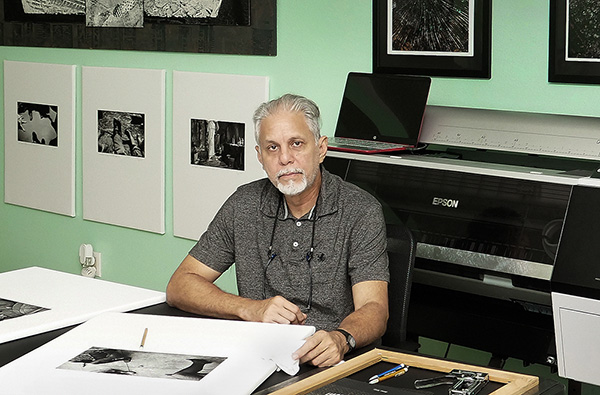José Ney Milá Espinosa, of Cuban nationality, was born in Havana on March 4, 1959. He is a self-taught photographer, recognized within documentary photography and auteur photography since the mid-1980s. Initially trained as a technical drawer, artisan artist, civil designer, and finally abandoned his career in architecture for photography. He received several awards in his country in drawing, painting, applied arts and photography, but his greatest achievements were from the early 90s, in international photography salons, achieving numerous awards and distinctions throughout his career.
Much of his work is in permanent collections such as the Southeast Museum of Photography Daytona; Palmer Museum of Art, Pennsylvania; Houston Museum of Fine Arts; Lehigh University Art Galleries / Museum Operation, Bethlehem, PA; Inés María Galerie, Houston; Mother Jones International. Fund for Documentary Photog, San Francisco; Fotofest, Houston, USA; Museum of Fine Arts of Santo Domingo. Dominican R.; Toscano Photographic Archive, Italy; UNESCO / ACCU, Tokyo. Japan; World Press Photo Foundation. Holland; University of La Rabida, Huelva. Spain; Media Library, INAH, Mexico; Galerie Bilderwelt Reinhard Schultz. Berlin Germany; National Museum of Photography, Pachuca, Mexico, and Fototeca de Cuba among others.
His dedication and innovation in the chemical processes of analog photography led him to develop new formulas for film development that surpassed the results and practices of the Black and White laboratory, of the avant-garde of the time such as Tetenal, Ilford, and Kodak. . He presented his inventions at the Spanish Patent and Trademark Office and marketed them at Casanova Profesional (specialized store in Barcelona) in partnership with Luis Casademunt (photographer) in 1997 and later in 1998, with Isaac Donoso (businessman in Madrid) to guarantee industrial production by a commercial contract signed with the international company JOBO, well known for its laboratory instruments (Labortechnik, GmbH & Co. KG. Gmbh) of Cologne, Germany.
His new formulas were published in the catalog of the year of JOBO products as New fine art line “The new generation fine art B / N chemistry” Page 70 and back cover, presented during the International Festival "FOTOKINA 2000" Kolonia, Germany, with the technical support of various specialists on the subject, such as the English John Tisley and the North American, John Sexton among others. In addition, various tests were published in various specialized magazines of the time, such as SCHWARZWEISS 27 (Das magazin für fotografie) "Auf anderer Wellenlänge", November, Germany. 2000; F.V. Nº 149. “Jobo: new Classic Line products”, Spain. 2001; Super Photo. No. 67. "Diary of a personalized development" Spain. 2001 and Super Photo. No. 70. "Diary of a personalized development (II)", Spain. 2001.
